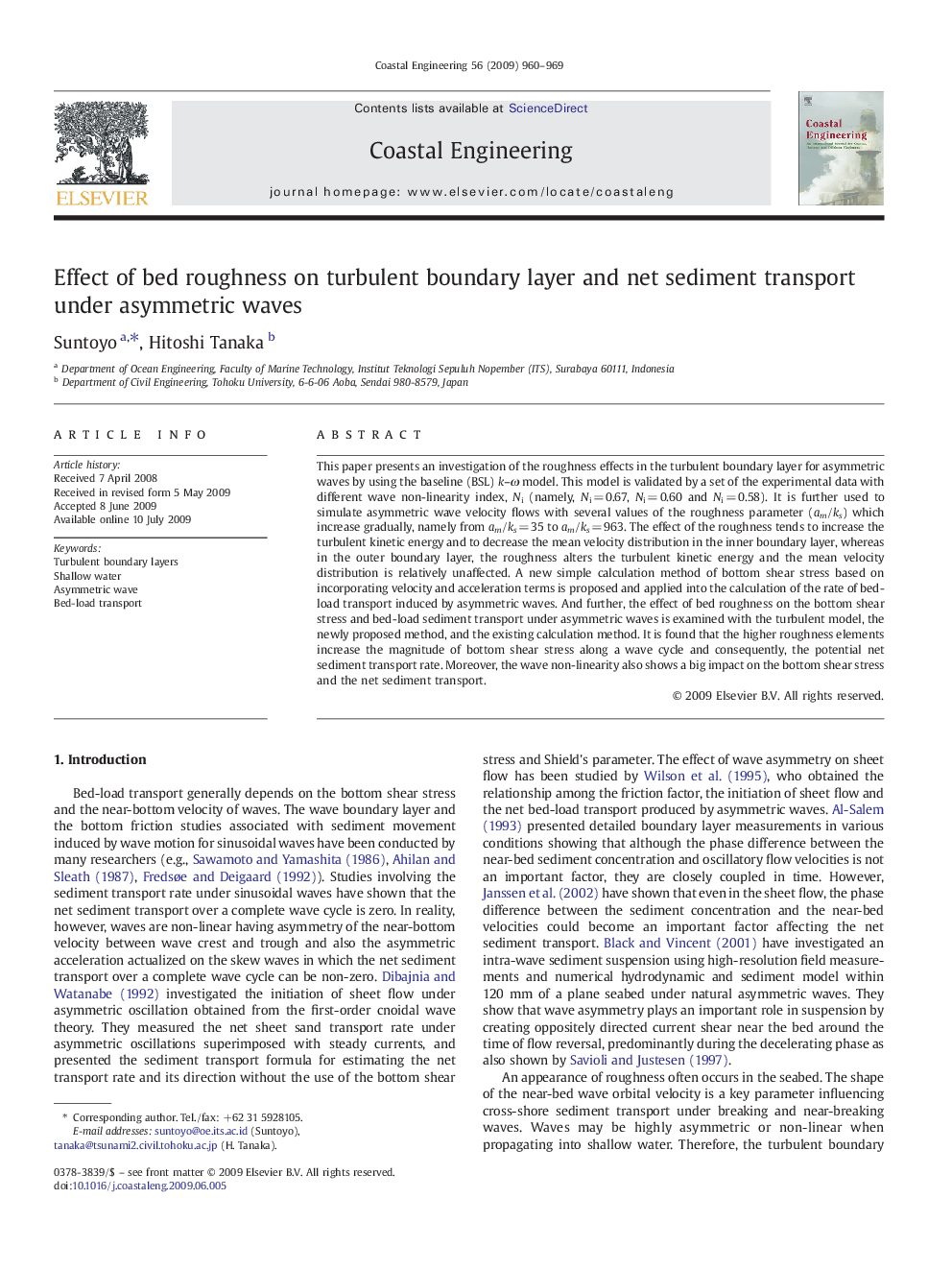| Article ID | Journal | Published Year | Pages | File Type |
|---|---|---|---|---|
| 1721277 | Coastal Engineering | 2009 | 10 Pages |
Abstract
This paper presents an investigation of the roughness effects in the turbulent boundary layer for asymmetric waves by using the baseline (BSL) k-Ï model. This model is validated by a set of the experimental data with different wave non-linearity index, Ni (namely, Ni = 0.67, Ni = 0.60 and Ni = 0.58). It is further used to simulate asymmetric wave velocity flows with several values of the roughness parameter (am/ks) which increase gradually, namely from am/ks = 35 to am/ks = 963. The effect of the roughness tends to increase the turbulent kinetic energy and to decrease the mean velocity distribution in the inner boundary layer, whereas in the outer boundary layer, the roughness alters the turbulent kinetic energy and the mean velocity distribution is relatively unaffected. A new simple calculation method of bottom shear stress based on incorporating velocity and acceleration terms is proposed and applied into the calculation of the rate of bed-load transport induced by asymmetric waves. And further, the effect of bed roughness on the bottom shear stress and bed-load sediment transport under asymmetric waves is examined with the turbulent model, the newly proposed method, and the existing calculation method. It is found that the higher roughness elements increase the magnitude of bottom shear stress along a wave cycle and consequently, the potential net sediment transport rate. Moreover, the wave non-linearity also shows a big impact on the bottom shear stress and the net sediment transport.
Related Topics
Physical Sciences and Engineering
Engineering
Ocean Engineering
Authors
Suntoyo Suntoyo, Hitoshi Tanaka,
